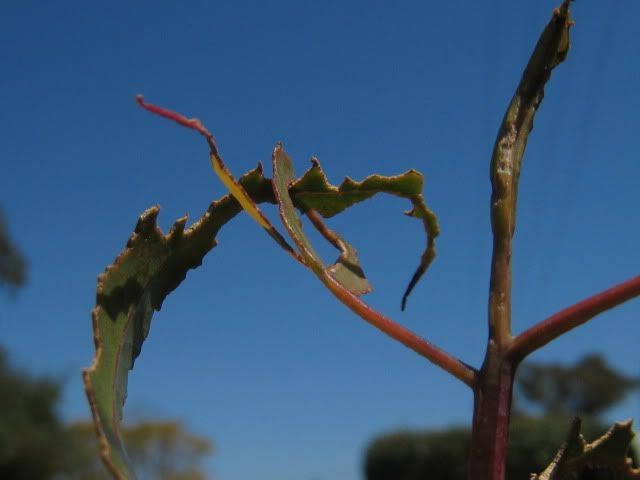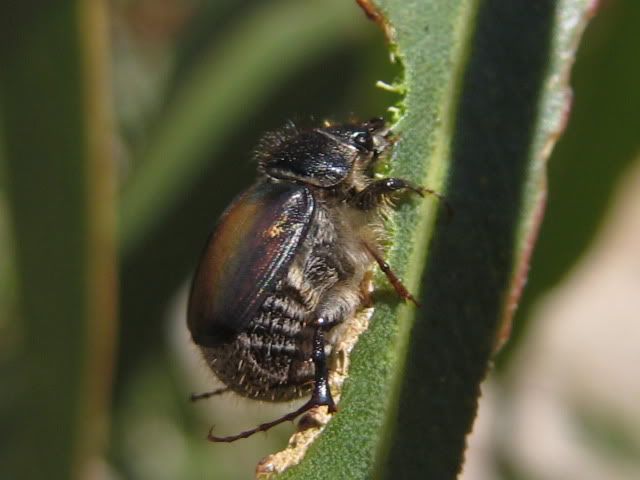A chafer at my tree
Liparetrus sp -(Scarabaeidae: Melolonthinae). Spring beetles.
 This scarab chafer beetle (cockchafer if you must) is pictured eating my treasured front verge saplings of illyarrie (Eucalyptus erythrocorys) and Eucalyptus todtiana. They emerged en masse from burrows in the sandy soil of the Swan Coastal Plain in late spring (October), literally swarming out of the ground after the grubs have lain for a year or two.
This scarab chafer beetle (cockchafer if you must) is pictured eating my treasured front verge saplings of illyarrie (Eucalyptus erythrocorys) and Eucalyptus todtiana. They emerged en masse from burrows in the sandy soil of the Swan Coastal Plain in late spring (October), literally swarming out of the ground after the grubs have lain for a year or two. Once up and out as adults, they showed a remarkable ability to defoliate my native eucalypt saplings. It is frighteningly impressive how much leaf biomass can disappear within days as 'undreds of the chafers swarm over that plants. And they do swarm. And persist in eating the trees despite constant shakes and hosing down the plants. These are my saplings that I planted on the front verge, and they have only really started to take off, so you can imagine my horror as they disappeared over days.  I received some advice on how to manage them, which involved lights, hosings, shakings and tolerance.
I received some advice on how to manage them, which involved lights, hosings, shakings and tolerance.
 I received some advice on how to manage them, which involved lights, hosings, shakings and tolerance.
I received some advice on how to manage them, which involved lights, hosings, shakings and tolerance.Anyways - to cut the long story short - I requested the help of an entomologist friend who became rather excited at these critters. Yes, they were a chafer beetle (as I had gussed), in the genus Liparetrus and could not be identitifed to species level. They were native and possibly even an endemic to the Swan Coastal Plain or SW Western Australian region. Yes, spring beetles are considered pests and usually sprayed when they occur in gum plantations - but these were local critters in small numbers in suburban gardens. I was lucky that some beetle work was being currently underway at the WA Museum, so my critters attracted some interest.
Looks like we will have to resort to DNA sequencing and some good, old fashioned taxonomic work to get a species name on this critter. Yes - that involves counting setae. I'm really impressed that common old suburbia continues to turn up undescribed species. I just have to plant some more local eucalypts to reduce the damage on my street trees and to support these (possibly endemic?) species in an region subject to huge amounts of bushland clearing.
